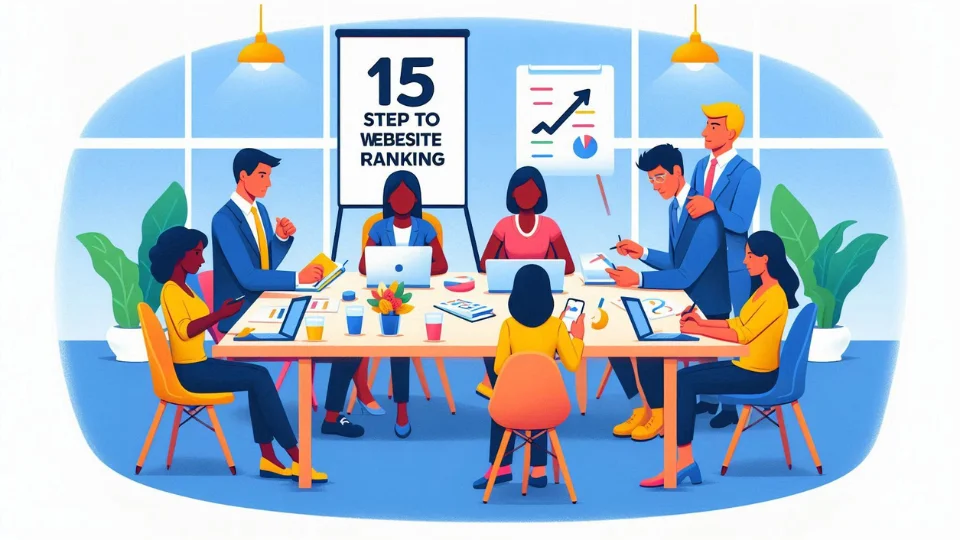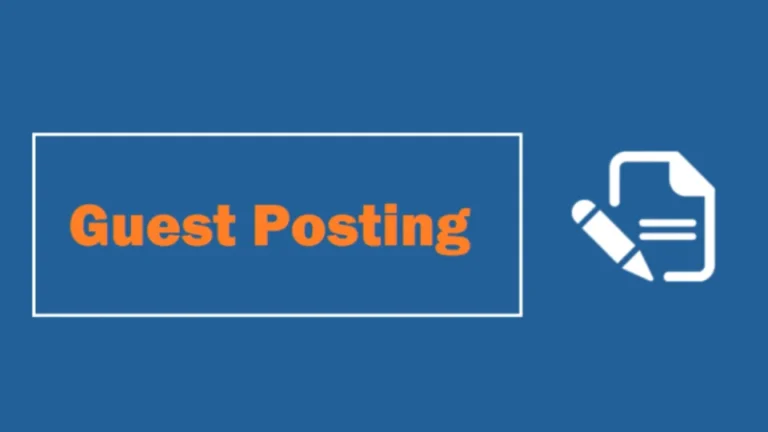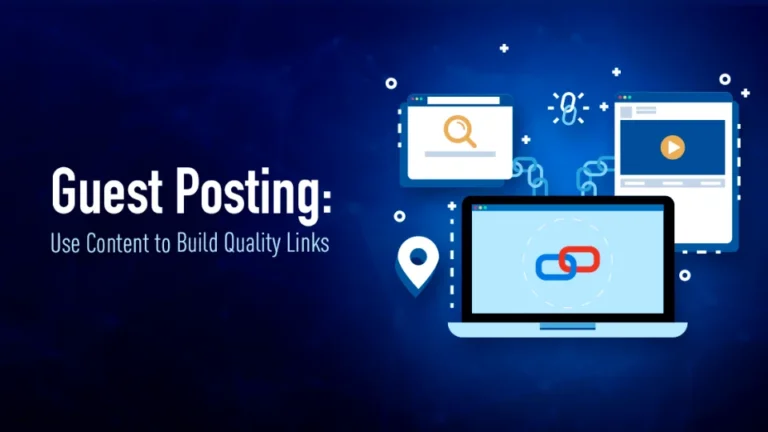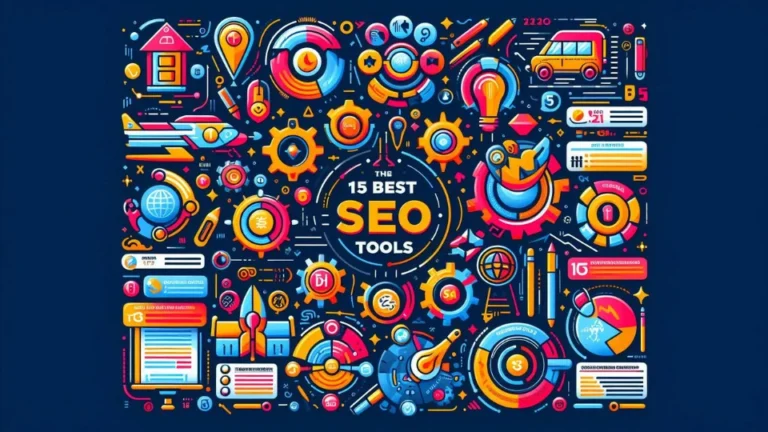How to Rank Higher On Google (15 Steps)
If you’re running a website, blog, or online business, ranking higher on Google can make all the difference. The first page of search results gets over 90% of all traffic—if you’re not there, you’re missing out. Thankfully, getting to the top isn’t magic—it’s strategy. In this guide, you’ll discover 15 proven steps to help your content rank higher on Google.
Why Google Rankings Matter

Before diving into the steps, it’s important to understand why rankings are so vital:
- Higher rankings mean more visibility
- Increased traffic can lead to more leads or sales
- It builds trust—people trust Google’s top results
1. Do Keyword Research (The Right Way)

Start with keyword research to understand what your audience is searching for.
Tips:
- Use tools like Google Keyword Planner, Ahrefs, or Ubersuggest
- Focus on long-tail keywords with lower competition
- Look for keywords with commercial or informational intent
2. Target One Primary Keyword Per Page

Don’t confuse Google. Each page should focus on a single primary keyword and related secondary ones.
Example:
For a blog about dog training, “how to train a puppy” might be your main keyword, with secondary terms like “puppy training tips” or “dog obedience basics.”
3. Create High-Quality, Original Content
Google rewards content that is:
- Informative
- Well-written
- Original
Avoid duplicate or thin content. Always aim to provide value.
4. Use Clear and Keyword-Rich Headings
Proper formatting makes it easier for Google to understand your content.
Best Practices:
- Use H1 for the title
- Use H2s and H3s for subtopics
- Naturally include your keywords in headings
5. Optimize Meta Titles and Descriptions
Your meta title and meta description appear in search results.
Optimization Tips:
- Keep titles under 60 characters
- Write compelling descriptions (under 160 characters)
- Include your target keyword
6. Improve Page Load Speed
A slow website hurts both user experience and rankings.
How to Speed Up Your Site:
- Compress images
- Use caching plugins
- Minimize JavaScript and CSS
7. Make Your Site Mobile-Friendly
Over 60% of Google searches come from mobile devices. If your site isn’t mobile-friendly, you’ll struggle to rank.
Use Google’s Mobile-Friendly Test to see how your site performs on smartphones.
8. Use Internal Linking
Link to other relevant pages on your site to help users and search engines navigate.
Benefits of Internal Links:
- Spread link equity
- Keep visitors on your site longer
- Help Google understand your content structure
9. Get High-Quality Backlinks
Backlinks are like votes of trust. The more quality sites that link to you, the better.
How to Earn Them:
- Guest posting
- Creating link-worthy content
- Reaching out to niche sites
10. Optimize Images with Alt Text
Google can’t see images—but it can read image alt text.
Best Practices:
- Use descriptive file names (e.g., “seo-checklist.png”)
- Add keyword-rich alt text
- Compress for fast loading
11. Use Structured Data (Schema Markup)
Structured data helps Google better understand your content and enables rich results like FAQs or reviews.
Common Use Cases:
- Articles
- Recipes
- Products
- FAQs
12. Improve Dwell Time and Reduce Bounce Rate
If users quickly leave your site, it signals to Google that your content isn’t helpful.
Ways to Keep Visitors Engaged:
- Use compelling intros
- Add images and videos
- Break up text with headings and lists
13. Update Content Regularly
Google favors fresh content. Keep your top pages up-to-date.
Examples:
- Add new stats or examples
- Remove outdated info
- Refresh titles and metadata
14. Create a Clear Site Architecture
A clean structure makes it easier for Google to crawl your site.
Structure Tips:
- Use logical categories
- Limit the number of clicks to reach any page
- Submit a sitemap via Google Search Console
15. Use Google Search Console and Analytics
Monitor what’s working and what’s not.
What to Track:
- Keyword rankings
- Click-through rate (CTR)
- Page performance
Comparison: Google Ranking vs Paid Ads
| Feature | Google Rankings (SEO) | Paid Ads (PPC) |
|---|---|---|
| Cost Over Time | Free (after setup) | Ongoing cost |
| Trust Factor | Higher | Lower |
| Long-Term Benefit | Yes | No (stops when budget ends) |
| Time to See Results | Slow (weeks/months) | Fast (immediate) |
| Click-Through Rate | Higher | Lower |
Pros and Cons of SEO for Google Ranking
Pros
- Long-term traffic growth
- Builds brand credibility
- Cost-effective
Cons
- Takes time to show results
- Requires ongoing effort
- Algorithm changes can affect rankings
FAQs About Ranking Higher on Google
Q: How long does it take to rank on Google?
A: It depends on competition, but it often takes 3–6 months for noticeable results.
Q: Is it possible to rank without backlinks?
A: It’s harder but not impossible. High-quality content and solid on-page SEO can help.
Q: Should I update old blog posts?
A: Yes. Regularly updating content signals freshness and can boost rankings.
Q: How many keywords should I use per page?
A: Focus on 1 primary keyword and 2–3 secondary ones. Avoid keyword stuffing.
Final Thoughts: Start Ranking Higher Today
Ranking higher on Google isn’t about hacks—it’s about building trust, providing value, and being consistent. Start by applying the 15 steps above one at a time. With patience and effort, you’ll see your website climb the search results.
Want to improve faster? Start by running an SEO audit on your site and focus on the areas that need the most attention first.







